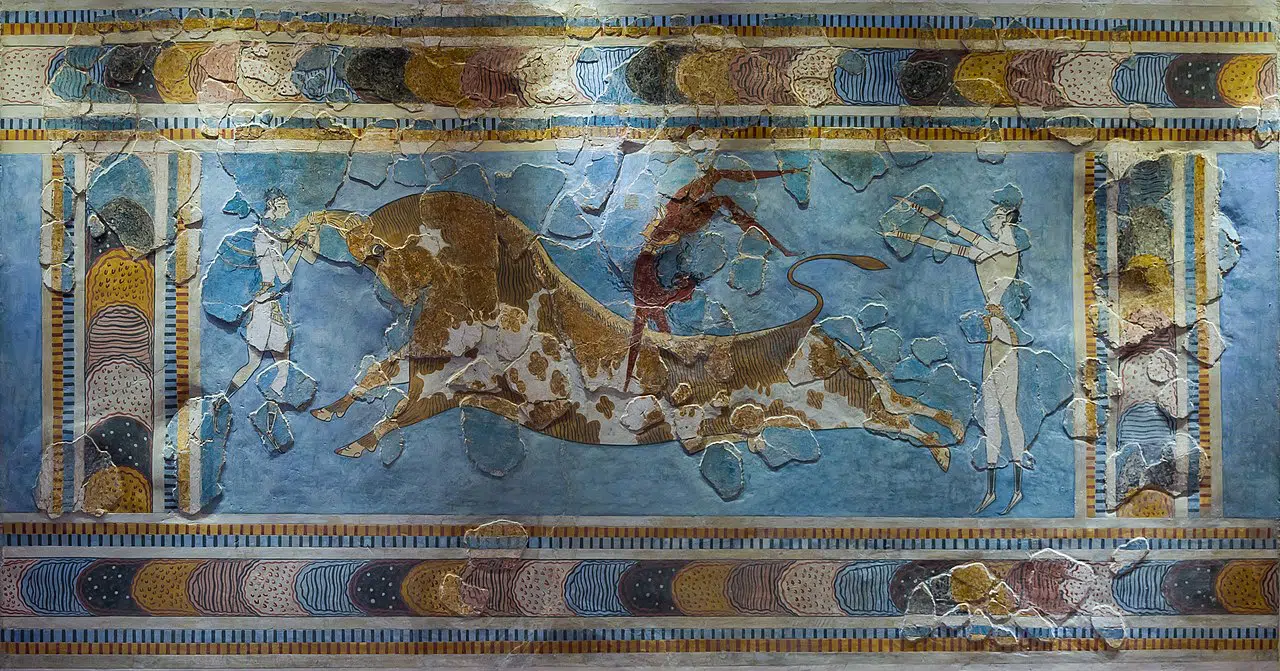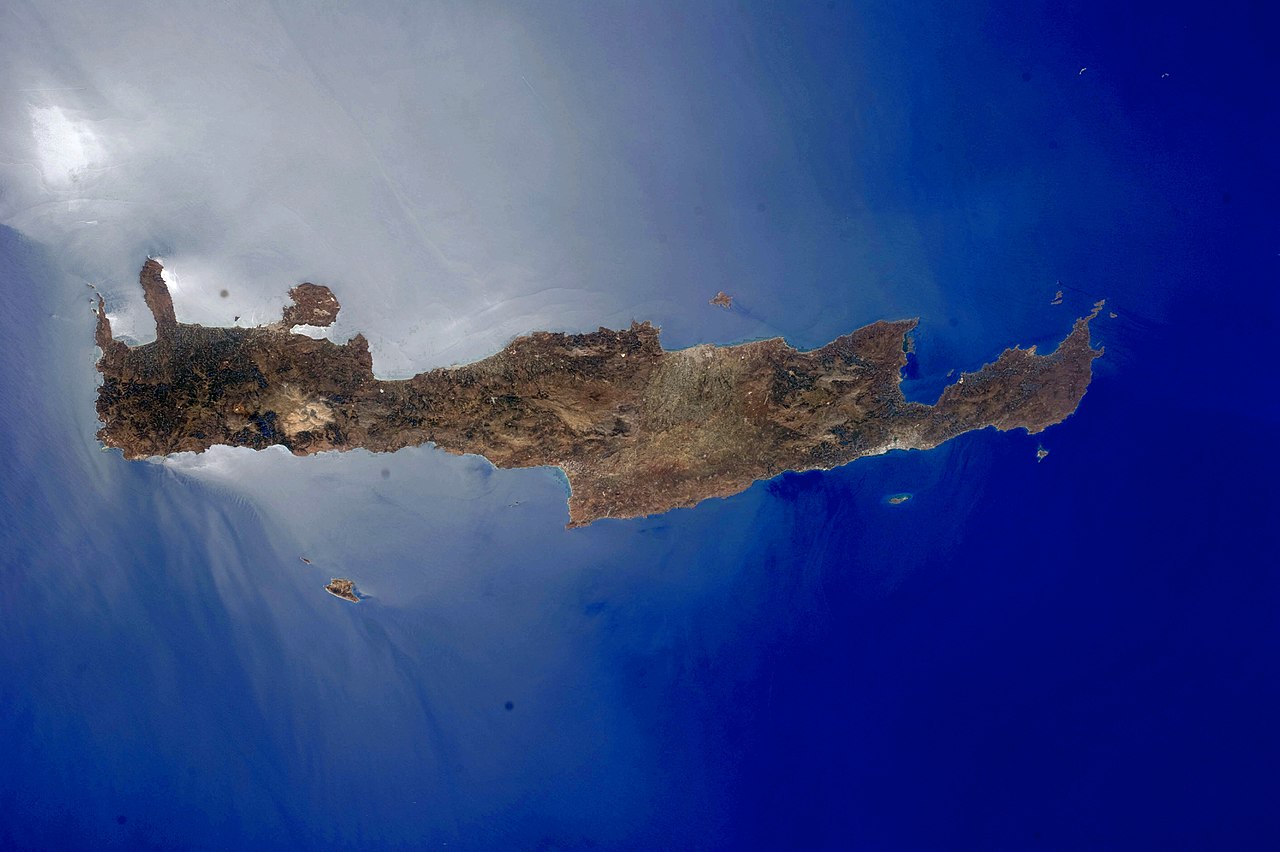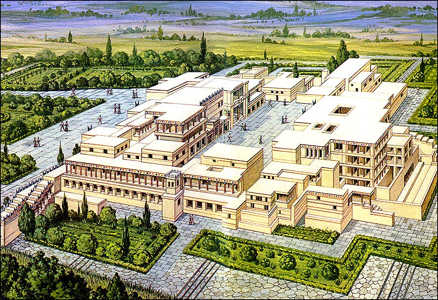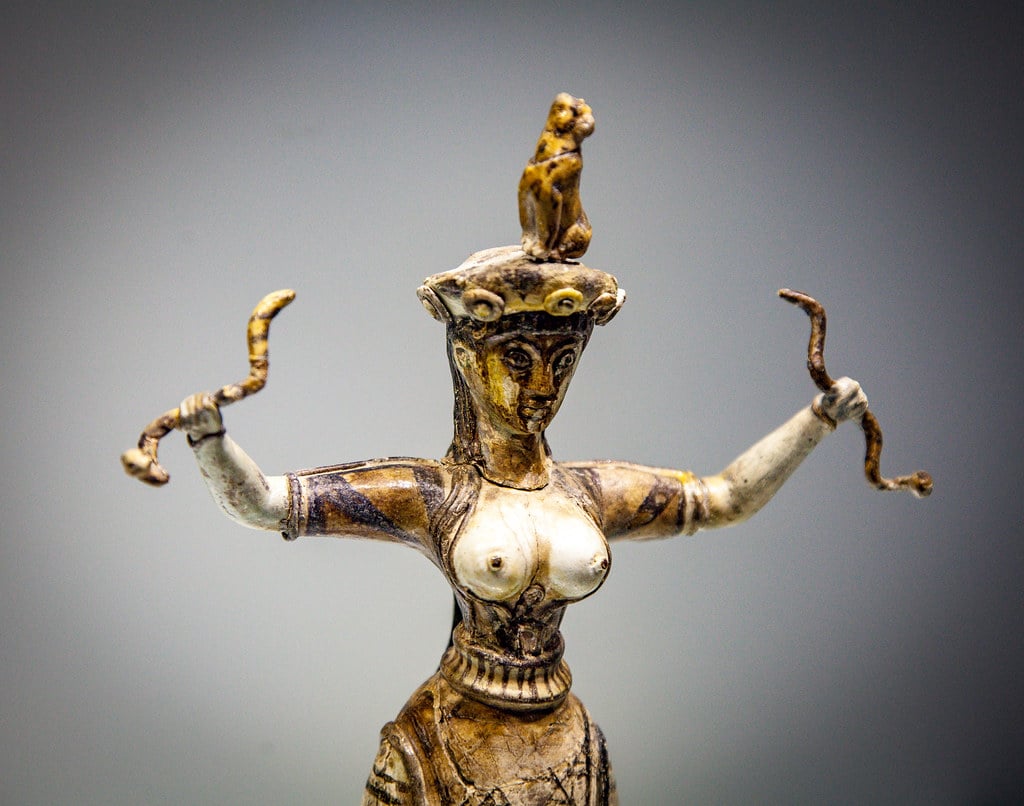
Plato’s account of the lost civilization of Atlantis includes a description of a marvelous temple of god Poseidon. It was said to have been in the center of Atlantis, so it was a very prominent part. However, in most investigations into the origin of Atlantis, this detailed temple description is ignored. In fact, an analysis of Plato’s details indicates that the Temple of Poseidon on Atlantis was actually identical to the Palace of Knossos on the island of Crete, Greece.
The Minoan Origin of the Legend of Atlantis
First of all, what reason is there for believing that Crete might have something to do with the legend of Atlantis? Crete was the center of the Minoan civilization, the powerful Bronze Age trading empire. As many researchers have argued in the past, there is plenty of evidence that this trading empire was the origin of Plato’s story of Atlantis. His description of a civilization that control one main island, several others, and parts of the continent clearly matches the Minoans.
Various specific details match as well, like the fact that they had advanced hydraulic systems, including the use of hot and cold water. They also constructed colorful buildings out of red, white, and black stones. More significantly, the Minoans fought a war against the Mycenaean Greeks. Just like the Atlanteans of Plato’s account, the Minoans lost.
Scholars who support this Minoan theory generally argue that Santorini was the origin behind the circular metropolis of Atlantis. They argue that Plato conflated Santorini with Crete, which better explains other parts of the legend.
The Temple of Poseidon on Atlantis
To see how the Temple of Poseidon matches the Palace of Knossos on Crete, we need to see what exactly Plato said about the temple.
Plato said that the temple was not only dedicated to Poseidon, but also to his lover, Cleito. It was to be found in the center of the island. Notably, Plato also said that there was a large rectangular plain in or near the center of the island. Therefore, the temple must have been near this great plain. Also, Plato explained that the temple had a ‘strange, barbaric appearance’. Inside were various statues made of gold, such as a statue of Poseidon himself. There were also statues outside the temple.
One of the most distinctive features of the Temple of Poseidon on Atlantis was the fact that bulls roamed around inside. Some of the kings of Atlantis would then hunt these bulls without weapons. Afterwards, the kings would sacrifice the bulls on a sacred pillar, on which there was a sacred inscription.

The Palace of Knossos Dedicated to Poseidon
The Palace of Knossos seems to have acted as the ‘capital’ of Minoan society. Or at least, it was by far the largest palace complex on Crete. Despite being known in modern sources as a palace or palace complex, scholars now know that it served religious functions. Whether this was its main purpose or not is unknown. In any case, it does appear to have been dedicated to Poseidon (known to the Minoans as ‘Poteidan’).
There is evidence that the Minoan Poseidon was associated with the bull. This being so, the fact that bull symbols (such as horns) are found decorating parts of the Palace of Knossos is significant. It provides evidence that the ‘palace’ was dedicated to this god. In line with this, Diodorus Siculus reports that King Minos of Knossos used to sacrifice a bull to Poseidon every year.
But there is also evidence that the Palace of Knossos was dedicated to a goddess as well, apparently known simply as ‘the Lady’. Presumably this was the lover of Poteidan. So just like with the Temple of Poseidon on Atlantis, the Palace of Knossos was dedicated to both Poteidan (that is, Poseidon) and his lover.

In the center of the Island
If Crete was the main island of Atlantis, and the Temple of Poseidon was said to be in the middle of the island, then we would expect Knossos to be in the middle of Crete. Is that what we find? As it happens, the Palace of Knossos lies basically at the center of Crete lengthways. It is near the northern coast, however, so it is not right in the exact center. To the south of it, also in the center of Crete lengthways, is the majestic Messara Plain. This fits in well with Plato’s description of the temple being in the center of the island, where the large plain also was.
The Barbaric Appearance of the Palace of Knossos

What about the barbaric appearance of the Temple of Poseidon on Atlantis? Does this match the Palace of Knossos? It certainly does. This palace complex has a famously unusual design, very unlike the ancient Greek temples or palaces. It was very asymmetrical and complex. For this reason, many scholars believe that it was the origin of the labyrinth of Greek mythology. This labyrinth was said to have been at Knossos, built for King Minos.
Surely, if it came to be remembered among the Greeks as a labyrinth, then this shows that it was viewed as having a strange appearance. Therefore, the Palace of Knossos does match this detail about the Temple of Poseidon on Atlantis.
Large Statues
Did the Palace of Knossos have large statues, like those described in Plato’s description? No Minoan examples have yet been found. So far, archaeologists have only discovered fairly small figurines at Minoan sites. However, there is some evidence that the Minoans did have large statues. Archaeologists have found individual body parts which are life-size, or larger than life-size. For example, they have found large-scale terracotta feet, as well as a fist. The existence of large pedestals also points towards the existence of statues.
Generally, scholars believe that the Minoans usually made statues out of perishable materials, such as wood. But there is also some evidence that they made metal statues, just like in Plato’s description of Atlantis.

Bull Fighting
Just as bulls wandered the Temple of Poseidon on Atlantis, there were bulls in the Palace of Knossos. There was a central courtyard, and in this courtyard there were bull games. Minoan frescoes – wall paintings – show athletes engaging in bull-leaping games. Other examples of Minoan art show hunters capturing bulls with ropes and nets, similar to what Plato described.
To the side of this main courtyard were several crypts. Inside each small room was a pillar with a sacred symbol inscribed on it. Evidence of bull sacrifices were found there. Thus, it seems very likely that the bulls involved in the bull games were led off to these crypts and sacrificed on the sacred pillars. This is virtually a perfect match for what Plato described. Even the very fact that the pillar had a sacred inscription on it matches the description of the pillar in the Temple of Poseidon.
See all the latest news from Greece and the world at Greekreporter.com. Contact our newsroom to report an update or send your story, photos and videos. Follow GR on Google News and subscribe here to our daily email!



